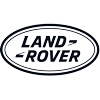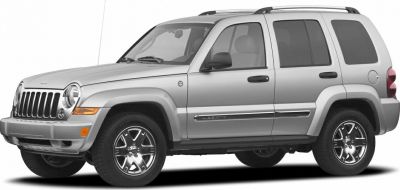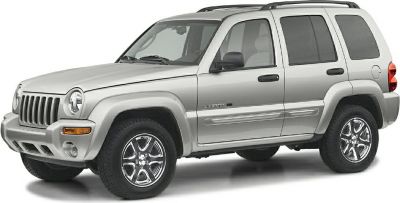 1970 Land Rover Range Rover I Dimensions, Size & Specs
1970 Land Rover Range Rover I Dimensions, Size & SpecsMeasurements of the 1970 Land Rover Range Rover I, engineered for optimal performance and comfort
| Dimensions | |
|---|---|
| Length: | 4449 mm175.2 in14.6 ft |
| Width: | 1818 mm71.6 in6.0 ft |
| Height: | 1790 mm70.5 in5.9 ft |
| Trunk Capacity: | 1020 liter36.0 cu ft |
| Trunk Capacity (Max): | 2000 liter70.6 cu ft |
| Weight Specifications | |
| Curb Weight: | 1892-2075 kg4171-4575 lbs |
| Maximal permitted Weight: | 2510-2620 kg5534-5776 lbs |
| Tire Specifications | |
| Rims Size: |
|
| Tire Sizes: |
|
The Land Rover Range Rover I, introduced in 1970 and produced until 1994, paved the way for luxury SUVs blending off-road capability with comfort and style. This first-generation Range Rover is a robust midsize SUV measuring 4449 mm (175.2 inches) in length, 1818 mm (71.5 inches) in width, and 1790 mm (70.5 inches) in height. Weighing between 1892 and 2075 kilograms (4171 to 4574 lbs) depending on the variant, it has a maximum weight ranging from 2510 to 2620 kg (5535 to 5771 lbs), showcasing its solid build and durable nature. The SUV features a generous luggage capacity of 1020 liters (36 cubic feet) with standard rear seating, which can be expanded to a maximum of 2000 liters (70.6 cubic feet) once the rear seats are folded down. This flexibility makes the Range Rover I practical for both day-to-day drives and adventurous expeditions. Equipped with 16-inch rims and tire sizes of 205/80 R16 or 205 R16, it offers a balanced combination of on-road comfort and off-road traction. As one of the iconic predecessors of modern luxury SUVs, the Range Rover I maintains a vintage appeal while providing significant interior space, rugged capacity, and distinct styling. It remains a landmark vehicle that set standards for size and functionality in the SUV segment during the 1980s and early 90s.
Discover the standout features that make the 1970 Land Rover Range Rover I a leader in its class
Have a question? Please check our knowledgebase first.
The Land Rover Range Rover I, produced between 1981 and 1994, has a length of 4449 mm (175.2 inches), a width of 1818 mm (71.6 inches), and a height of 1790 mm (70.5 inches). These dimensions highlight its substantial and rugged SUV build, designed to deliver both on-road comfort and off-road capability. Its width ensures spacious interior space, while the height gives it an imposing stance suitable for diverse terrains.
The Range Rover I has a curb weight ranging from 1892 kg to 2075 kg (4171 to 4574 lbs). This weight is substantial, reflecting the car’s robust construction typical of SUVs from that era. The heft contributes to a solid, stable ride, particularly useful in off-road conditions, offering strong traction and momentum across varied terrain. However, the heavier weight can affect fuel efficiency and acceleration compared to lighter vehicles, but it also implies a sturdy and safe build.
The maximum permissible weight of the Range Rover I is between 2510 kg and 2620 kg (5535 to 5771 lbs). This figure includes the vehicle’s curb weight plus passengers, cargo, and any additional equipment. Adhering to this limit is crucial for safety and maintaining optimal performance. Overloading beyond this weight can stress the suspension, brakes, and tires, compromising vehicle control and increasing wear and tear.
The Range Rover I provides 1020 liters (36 cubic feet) of luggage space with the rear seats in use, which is quite roomy for passenger luggage and gear. When the rear seats are folded down, this capacity expands dramatically to 2000 liters (70.6 cubic feet), making it highly versatile for transporting large items or more cargo. This capacity underlines the vehicle’s design focus on utility and practicality.
The Range Rover I uses 16-inch rims paired with tire sizes 205/80 R16 and 205 R16. These tires provide a good balance of on-road comfort and off-road capability. The 16-inch rim size is suitable for handling rough terrains, while the tire width and profile contribute to traction and ride smoothness, essential for a vehicle built for rugged conditions.
The Range Rover I measures 4449 mm (175.2 inches) in length, 1818 mm (71.6 inches) in width, and 1790 mm (70.5 inches) in height. Standard home garages typically range around 2400 mm to 2700 mm (94.5 to 106 inches) wide and 4800 mm to 5400 mm (189 to 213 inches) deep. Given these dimensions, the Range Rover I will fit comfortably in most standard garages in terms of length and width. However, clearance should be checked in terms of door height and width to ensure easy ingress and egress.
Before the Range Rover I’s introduction, Land Rover primarily offered the Series models which were more utilitarian and smaller in size. The Range Rover I marked a significant evolution with its longer length of 4449 mm (175.2 inches), wider width of 1818 mm (71.6 inches), and more refined interior space, blending luxury with off-road capability. Compared to its predecessors, it was larger, heavier (1892-2075 kg vs. lighter Series models), and introduced more comfort and versatility, making it effectively a pioneering luxury SUV.
In comparison to contemporaries like the Jeep Wagoneer or early Mercedes-Benz G-Class models, the Range Rover I offered a competitive size profile. Its length of 4449 mm (175.2 inches) and width of 1818 mm (71.6 inches) were similar or slightly more compact than some peers but with a notable emphasis on luxury and ride comfort. This dimension allowed it to blend off-road ruggedness with on-road refinement better than many rivals, which often skewed more towards either utility or luxury exclusively.
Produced from 1981 to 1994, the Range Rover I was revolutionary as one of the first vehicles to combine off-road capability with luxury features. It was equipped with four-wheel drive, generous interior space, and advanced suspension for the time, which provided a smooth ride on and off-road. Over the years, it developed a reputation for durability, comfort, and versatility, becoming an icon in the luxury SUV segment. Its robust build and mixture of power and comfort set standards for future SUVs.
The Range Rover I forged a new category by merging luxury with genuine off-road capability, setting the template for all future luxury SUVs. It demonstrated that an SUV could be both comfortable and rugged, influencing competitors and successive Range Rover models. Subsequent generations built on this foundation by enhancing technology, interior quality, and performance, but the Range Rover I remains a landmark which defined the brand’s identity and the luxury SUV segment as a whole.
Discover similar sized cars.

| Production: | 2004-2007 |
|---|---|
| Model Year: | 2005 |
| Length: | 4430-4437 mm174.4-174.7 in |
| Width: | 1824 mm71.8 in |
| Height: | 1784-1824 mm70.2-71.8 in |

| Production: | 2001-2004 |
|---|---|
| Model Year: | 2001 |
| Length: | 4437 mm174.7 in |
| Width: | 1819 mm71.6 in |
| Height: | 1785 mm70.3 in |

| Production: | 2005-2007 |
|---|---|
| Model Year: | 2004 |
| Length: | 4427 mm174.3 in |
| Width: | 1781 mm70.1 in |
| Height: | 1795 mm70.7 in |
